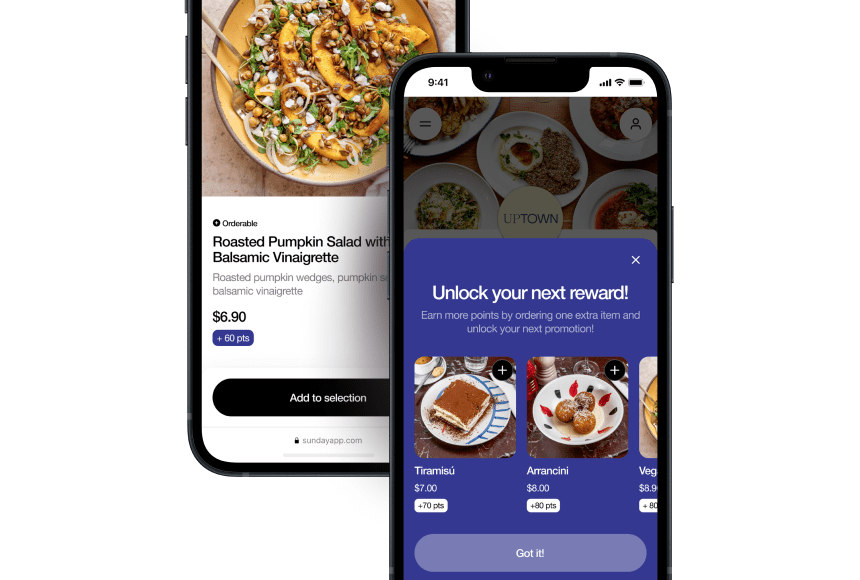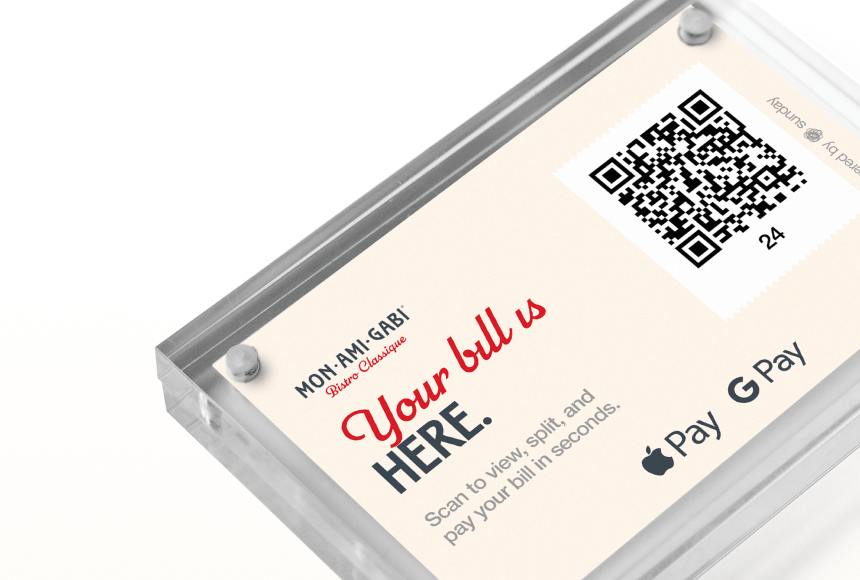
Streamlining Your Restaurant Operations in Record Time
Understanding the Concept of a Restaurant Workflow
Picture the flow in your kitchen during your busiest service. Stations run like clockwork, servers glide between tables, and guests receive their meals right on time. That seamless process relies on an effective workflow. In essence, a restaurant workflow encompasses all the tasks and steps that turn raw ingredients into a finished dish on the table, and carries on until the moment your customer pays and leaves feedback. When the workflow is optimized, customers notice the efficiency, your staff feels less stressed, and your bottom line improves.
The goal of a smooth workflow is to maximize efficiency and minimize chaos. While each restaurant is unique, many share the same underlying challenges: organizing consistent food prep, maintaining accurate inventory, and ensuring that both front-of-house and back-of-house teams operate in harmony. But here’s the silver lining: streamlining these steps doesn’t have to be overwhelming. With the right approach, you can improve your entire operational pipeline in less than a week—and see results during your very next service.
Assessing Your Current Processes
Before making any changes, you need to know where you stand. If you don’t measure the spacing between the tables, you risk seating guests too close to one another. Likewise, if you don’t track each workflow component, you may never spot potential bottlenecks.
- Observe each stage: Spend a full day shadowing your team—from kitchen prep to table clearing. Take plenty of notes, and encourage staff to speak up about any issues they encounter throughout their shifts.
- Identify delays: Do orders get stuck at a particular station? Do certain menu items slow everything down during peak hours? You might discover that the dish requiring 15 different garnishes is not worth the time or friction it causes.
- Gather quantitative data: Track table turnover times, average ticket times, and the volume of orders per hour. According to the National Restaurant Association, about 60% of restaurant owners who track key performance indicators (KPIs) see faster improvements in sales and guest satisfaction.
Menu Simplification and Kitchen Efficiency
Think of your menu as the foundation of your restaurant’s workflow. If you have too many complex dishes, your kitchen can become a traffic jam of tasks, cluttered stations, and overextended chefs. Simplifying the menu is a proven, fast strategy for improving efficiency, and it’s one you can carry out quickly.
- Trim down the menu: Eliminating dishes that rarely get ordered (or that require complicated prep) opens up room for your team to focus on crowd favorites with higher profitability. It also reduces food waste.
- Group ingredients: Using ingredient overlap—from sharing marinades to standardizing sauces—speeds up cooking time. A single versatile sauce can transform multiple dishes, so your team can master it quickly and maintain consistency.
- Set up kitchen “stations”: Organize your kitchen so each station focuses on a particular step—salads, proteins, plating. Everyone knows exactly where to stand and what to do, cutting confusion and chatter in half.
Doc, the sous-chef at a busy bistro I consulted with, recalled how the addition of just one more piece of equipment—a separate pot for broths—saved them 20 minutes each day. And in a restaurant, 20 minutes of regained time can translate into faster table turnover and happier guests.
Empowering Your Team with Training
Even in a top-tier restaurant, success depends on how well-trained the staff is. Whether it’s front-of-house or back-of-house, team members should have a clear understanding of their responsibilities and know how to handle unexpected curveballs—like a sudden run on the daily special.
In one week or less, you can accomplish significant on-the-job coaching by pairing up employees. For instance, a line cook who is quick on the grill can teach another how to manage multiple orders efficiently. Alternatively, a server who handles large parties calmly can offer tips to someone who might be new to high-volume situations.
- Focus on quick training sessions: Fifteen-minute morning huddles can help refresh your team on daily priorities or new table-turn strategies. Keep sessions short and practical.
- Standardize procedures: Create simple, written checklists for tasks, whether it’s how to open the bar or how to run the final check with diners. Everyone follows the same steps, reducing guesswork.
- Encourage feedback: Let the staff weigh in. They’re on the front lines and often have the best suggestions for smoothing out wrinkles.
A well-trained team is like a well-used cast-iron pan—seasoned and able to handle anything you throw at it. Give them the right direction, and they’ll reward you with consistently positive guest experiences.
Adopting Technology for Faster Turnarounds
You’ve likely seen how an outdated approach—like scribbling down orders on slips of paper—leads to confusion and slower service. Modern technology can help optimize your workflow practically overnight. Many restaurants use point-of-sale (POS) systems, kitchen display systems (KDS), and contactless payment solutions to streamline tasks.
One tool gaining popularity is QR code menus and payments. By placing a QR code on tables, you can let customers browse a digital menu, order, and pay immediately once they’ve finished eating. With sunday—a solution offering pay-by-QR, automatic tip suggestions, and a quick avenue to leave a Google review—both front-of-house staff and guests benefit. Servers no longer have to juggle credit cards, print checks, and hustle back to pick up signatures. Instead, they focus on personal interactions, table checks, or assisting the kitchen during peak hours.
- Sync up your devices: Ensure your POS system communicates seamlessly with the kitchen displays, servers’ handheld tablets (if you use them), and any third-party apps.
- Leverage data: Track popular items, average checkout time, and top-selling categories. As reported by Restaurant Business Online, restaurants that regularly analyze POS reports can reduce labor costs by up to 10% and increase revenue by trimming wasted efforts.
- Train staff on new tech: A fancy system is worthless if your team has no idea how to use it. Dedicate time to quick tutorials, and encourage learning by practice through role-playing different customer scenarios.
Payment Solutions as a Workflow Win
It might be easy to overlook payments as a critical juncture in your workflow—but think about it: each customer likely spends two to five minutes at the payment stage. Multiply that by dozens or hundreds of covers, and suddenly you have a meaningful chunk of your day eaten up by payment processes.
In a traditional setup, the server prints the check, drops it off, waits for the card, swipes it, returns for a signature, collects the check, and thanks the guest. Meanwhile, other tables might be waiting for attention. A solution like sunday condenses these steps into one immediate action: your guest scans the QR code at the table, checks the bill, leaves a tip, pays, and—if you set it up—posts a Google review. This reduces staff foot traffic and table “occupation time,” freeing your team to seat the next guest faster or give more attention to existing tables.
These improvements go beyond convenience:
- Fewer lines at the register: If customers can pay right at the table, you won’t see a huddle of people waiting to split checks at the front.
- Higher tip percentages: Many digital payment solutions show default tip options—leading to a modest but consistent increase in tip amounts, instantly benefiting your staff.
- Better guest data: Some solutions give you aggregated analytics—on average spend, time spent paying, and user feedback—to refine operations further.
Reducing Wait Times with Efficient Table Management
A swift turnover can boost your daily covers without leaving guests feeling rushed. The challenge: balancing speed and comfort. Nobody wants to be hurried out the door, but an unoccupied table for too long is lost revenue. To optimize your seating and table turnover, consider these tactics:
- Create a reservation strategy: Use tabletop signage or station a host to greet guests the moment they arrive. Keep your reservation books consistent, and—if you can—automate confirmations via text or email to reduce no-shows.
- Anticipate Shakeups: If you see a particular table hanging around for a while, budget that in. Similarly, train staff to politely move large parties into the bar area (if available) once they’re finished dining.
- Adopt waitlist apps: Some apps alert the host or manager when a table is coming free. That notification triggers a quick turnover: clearing, sanitizing, and reseating in mere minutes.
Always keep in mind that efficiency shouldn’t make your guests feel like they’re on an assembly line. There’s a fine line between a welcoming environment and one that feels rushed. Offering water, coffee refills, or a check at the right time is a crucial art—and it’s one your hosts and servers can master with the right scripts and guidance.
Implementing a Solid Scheduling System
The unpredictability of restaurant service is part of its charm, but it can also be a headache if you don’t plan staff schedules well. Overstaff, and you spend more on labor than necessary. Understaff, and you risk sagging quality and unhappy employees. To strike the ideal balance, design a schedule that aligns coverage with realistic projections of daily traffic.
- Forecast Demand: Look at historical data and local events. If there’s a city-wide festival coming, expect a surge in foot traffic and staff accordingly.
- Cross-Train Staff: An employee who can shift between hosting duties, barback work, and food running can cover for a sick colleague at a moment’s notice.
- Use Scheduling Software: Many automated platforms simplify everything from shift-swapping to time-clock logs. They even send reminders to staff who have upcoming shifts.
Scheduling is like seasoning a dish: too much or too little can spoil the flavor. Aim for just the right blend—enough people to handle the crowd at its peak without leaving staff idle during slower periods.
Enhancing Internal Communication
Communication breakdowns are a leading cause of errors, from missed orders to undercooked steaks. You want a culture where front-of-house and back-of-house are in sync at all times. A quick shout of “86 the salmon!” is meaningless if it’s not relayed to the entire team, especially your hosts telling new arrivals about daily specials or unavailable dishes.
- Pre-shift briefs: A five-minute overview of the day’s events, expected volume, and menu updates keeps everyone on the same page.
- Visual boards or screens: Particularly helpful for kitchens, these can display updated inventory, food in progress, and any new instructions from management.
- Digital messaging: Many restaurants use group chats to share immediate changes. For example, if the chef sees that the bar is running low on citrus, a quick note can have someone restock in seconds.
The more open and transparent the communication, the fewer the errors—and the better the workflow. Staff unity leads to faster turns, happier guests, and improved morale. You’ll see it reflected in your feedback and your revenue.
Delivering Consistent Customer Experiences
From the diner’s perspective, a “smooth workflow” means always receiving the same level of service, no matter who the server is or what dish they’ve ordered. Consistency builds trust. One reason fast-food giants succeed in every city is that customers know what to expect. While you don’t have to replicate a cookie-cutter approach, you should strive for consistent guest experiences every day of the week.
Along with standardizing your internal processes, consider how you handle complaints or special requests—like extra sauce, allergies, or substitutions. If servers are unsure when they can say “Yes” or what to charge, confusion creeps in. That confusion can lead to extended wait times and less-than-thrilled patrons.
- Create a quick-reference guide: Outline rules for special requests, allergen protocols, and common issues. Make it accessible to everyone.
- Encourage staff engagement: Greet returning guests by name if possible, and preemptively offer a refill if you notice their glass is low.
- Allow staff to rectify errors immediately: If the kitchen is short on an ingredient, inform guests promptly and offer alternatives or small perks. Speed plus a genuine apology can calm even the most frustrated diner.
Gathering Input and Continuously Improving
Think of your restaurant’s workflow as an ever-evolving recipe. Every day offers new data, new feedback, and new challenges. If you gather insights from both staff and customers, you’ll be able to keep tweaking to perfection.
Here are some ways to gather and use feedback effectively:
- Staff debriefs: After a busy shift, spend five minutes letting team members highlight what went well and where they struggled.
- Customer comments: Tools like sunday make it easy for guests to leave Google reviews. Read them carefully. Positive or negative, feedback helps you identify strengths and weaknesses.
- Track improvements over time: If you swapped out a complicated menu item, compare prep times and total orders before and after the change. Document your findings and share them with the team so everyone can see their progress.
Continuous improvement isn’t just for large chains. Even the smallest local bistro can build a culture of ongoing growth, boosting staff pride and guest loyalty.
Speed-to-Action: Making Changes in Less Than a Week
Ready to roll out improvements in seven days or less? Here’s a rapid roadmap to keep you on track:
| Day | Action |
|---|---|
| Day 1 | Analyze your existing workflow. Take notes, observe bottlenecks, talk to staff about current pain points. |
| Day 2 | Begin simplifying the menu. Remove low-selling, high-effort dishes. Organize training sessions on any new or updated stations. |
| Day 3 | Set up new or updated tech tools. Test drive a contactless payment solution like sunday. Ensure your POS is syncing with the kitchen. |
| Day 4 | Revise scheduling based on data and cross-train select employees. Standardize procedures for common tasks. |
| Day 5 | Focus on communication and staff feedback. Introduce shift checklists, pre-shift briefs, and quick post-shift meetings. |
| Day 6 | Gather customer feedback via Google reviews. Check tipping percentages, overall payment times, and staff morale. |
| Day 7 | Refine final details: tweak menu, confirm which changes boosted efficiency, and set up a plan for continuous improvement. |
This approach doesn’t require a massive budget or months of planning—just a well-organized checklist. The key is to implement each step quickly, gather feedback, and adjust as you go.
Embracing the Next Level of Success
Improving your restaurant workflow in under a week might sound like a culinary fantasy, but it’s achievable with focus, data-driven actions, and the right tools. The real question is: Are you ready to leap into a more efficient, guest-friendly world?
When you remove the friction from day-to-day operations—by trimming an overly complicated menu, introducing streamlined payment solutions like sunday, training staff in short bursts, using updated POS tech, and encouraging open communication—you’re setting the table for long-term success. Guests will notice the improvement; they’ll feel more comfortable, enjoy quicker service, and often show their appreciation through glowing reviews and higher tips.
Still worried about staff resistance? Resist the urge to bulldoze changes without explanation. Involve them in the process. Show them how these tweaks make their jobs easier, not harder. Empowered employees who grasp the “why” behind change become your most enthusiastic ambassadors—bolstering morale, forging stronger team unity, and ultimately creating outstanding experiences for every patron who walks through your door.
Frequently Asked Questions
- How do I get staff on board with changes so quickly?Include them in the decision process. Explain the benefits to them personally—like reduced stress and clearer responsibilities—and invite suggestions. Quick, practical demonstrations and on-the-job coaching work wonders.
- Will simplifying my menu annoy regular customers who expect certain dishes?It’s possible some customers might miss a discontinued dish, but if you explain that quality and service are improving, they usually understand. You can also rotate seasonal favorites to keep long-time patrons excited.
- Which tools are essential to update first?Focus on the tech that cuts down repetitive tasks. A reliable POS that syncs your entire operation and contactless payment solutions that speed up table turnover are usually the best investments. From there, expand into scheduling and messaging apps.
- Is it really worth gathering customer feedback?Absolutely. Even short comments can highlight specific improvements or issues you may have missed. Consider motivating guests to share their feedback with a slight incentive, like a future discount or a free dessert.
- How do I keep the momentum going after the initial week?Schedule regular reviews—weekly or monthly—where you revisit your key performance metrics, staff notes, and guest feedback. Make incremental tweaks and celebrate small wins with your team.
Find out more today
Drop us your details below and we’ll reach out within the next 24h
Get the full, detailed picture.
sunday elevates your business with insightful data, instant feedback and precise analytics.




